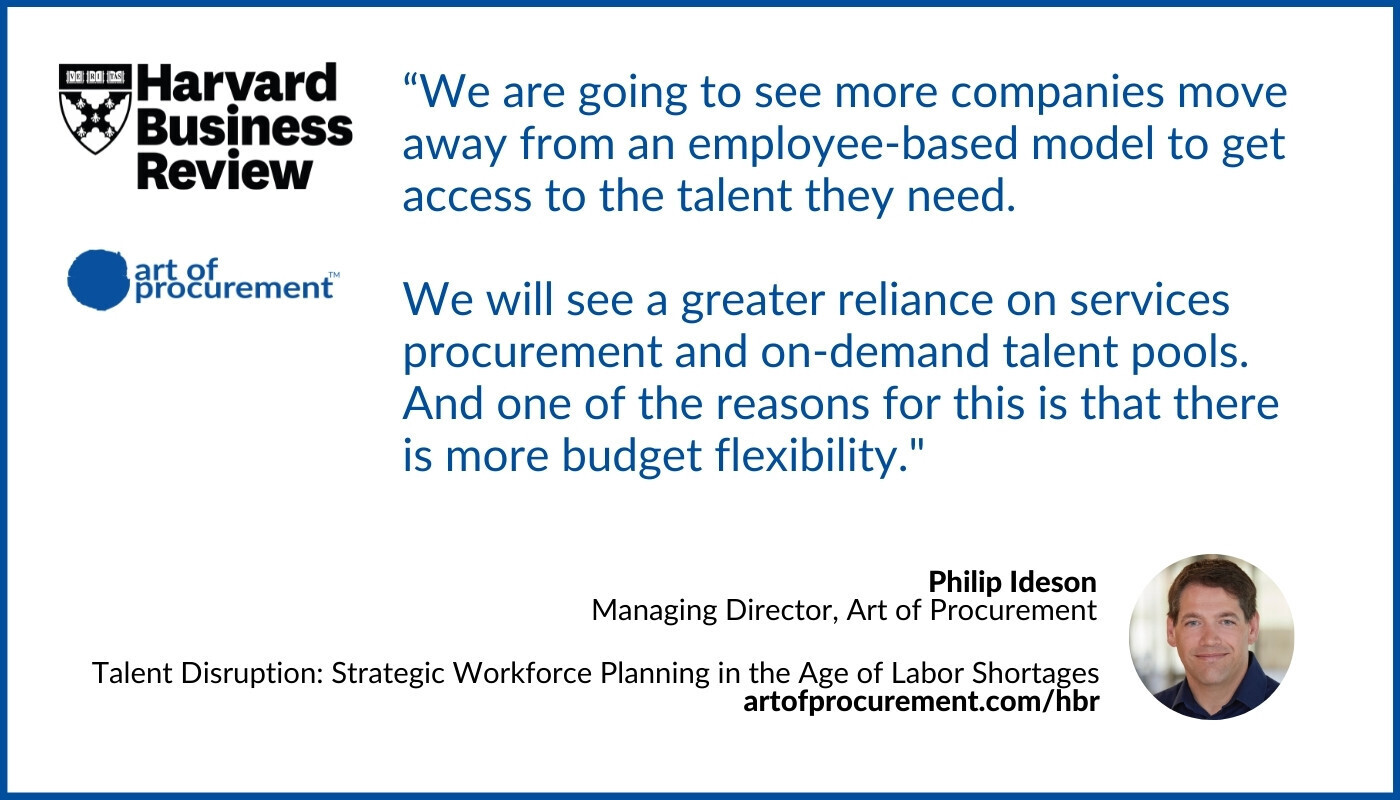
Procurement has to focus on driving business outcomes, and this is just as true in the case of talent as it is with product and material sourcing. My partner Philip Ideson was recently approached by Harvard Business Review and asked to share his point of view on procurement’s role in today’s quickly evolving talent market.
Read the paper here: Talent Disruption: Strategic Workforce Planning in the Age of Labor Shortages
As with so many other efforts, questions remain about whether procurement is being strategic enough. We should be asking ourselves:
- What outcomes are we trying to drive?
- What is our position on insourcing or outsourcing services?
- What is our approach to getting hold of the best talent?
- Are we willing to support more variable costs and talent models?
As companies realize that there is no one-size-fits-all solution to strategic talent, the ability to remain flexible becomes a competitive advantage. As Philip told HBR, “In my opinion, we are going to see more companies move away from an employee-based model to get access to the talent they need. We will see a greater reliance on services procurement and on-demand talent pools.”
Not only does a multi-faceted approach to talent sourcing provide access to next-level talent, it does so with maximum budget flexibility. Demand spikes and drops in many organizations, and a company that meets certain talent needs through third parties will have the agility required to match supply to demand without creating excessive risk.
As you might expect, technology will play a key role in transitioning to this approach. “My vision is that technology will move us to more of a self-service environment where business stakeholders can procure the services they need faster and more efficiently without the involvement of the procurement function,” he wrote. “You can view this as an existential threat to the profession or an opportunity—but for it to be an opportunity, procurement professionals need to take a proactive role in embracing technology.”
Procurement may not be comfortable with all of these changes or with business expectations, but that is not an excuse for failing to innovate. We can be a conduit for strategic talent access, or we can accept that the business will bypass us in order to keep up with the competition.





